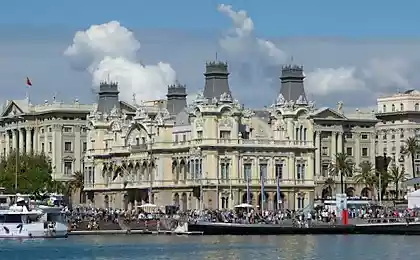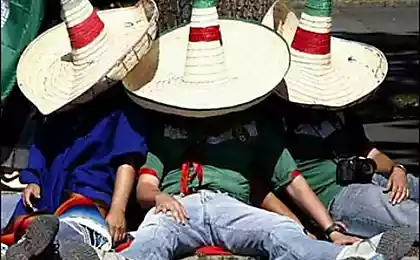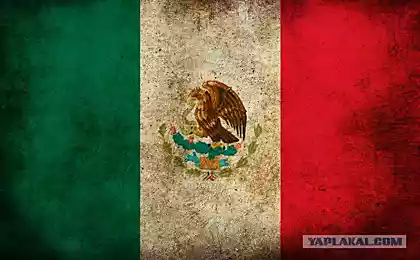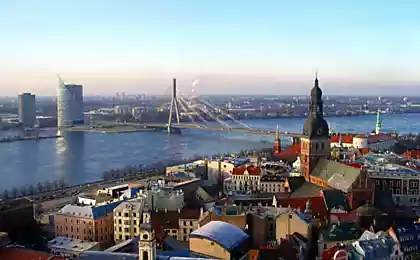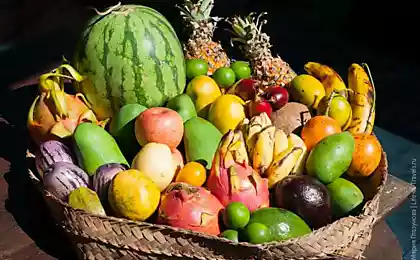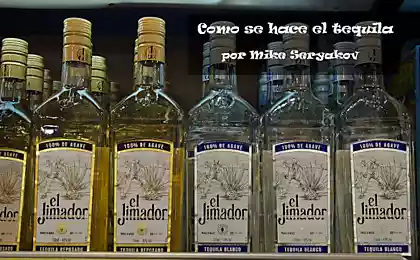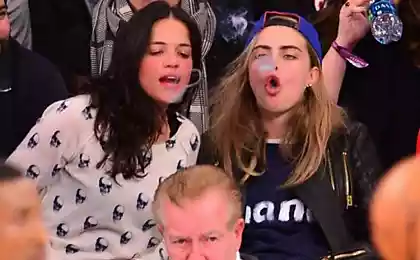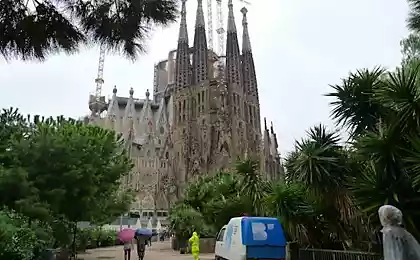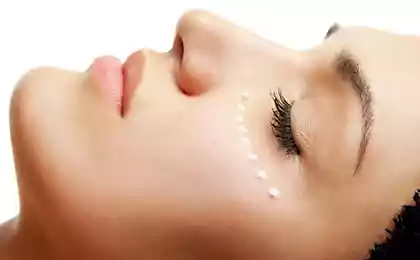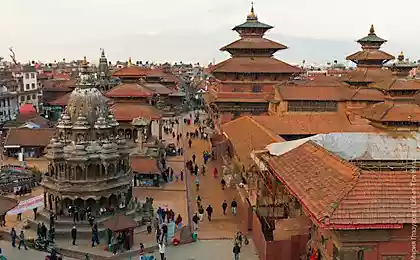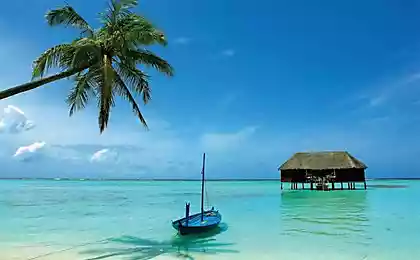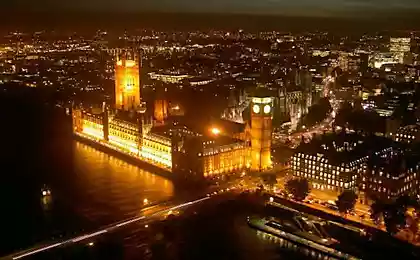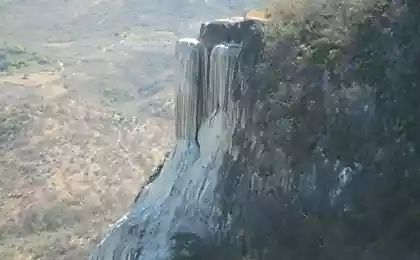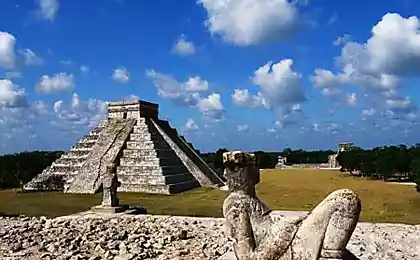1030
50 facts about Mexico through the eyes of Russians
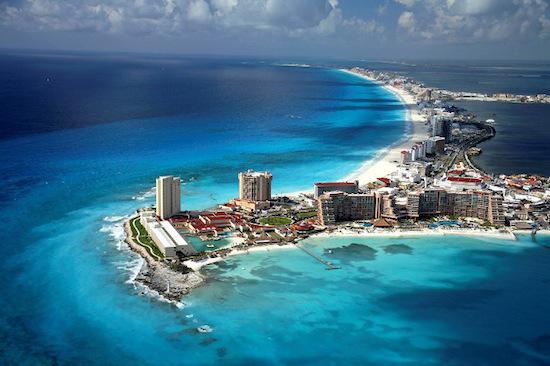
Write our regular readers of Alexei and Maria Glazunov: It has been almost a year since our trip to North America, and today we have decided to refresh the memory of this trip will be 50 facts about Mexico on the basis of our experience. We do not pretend to be objective - this is only our vision of the country.
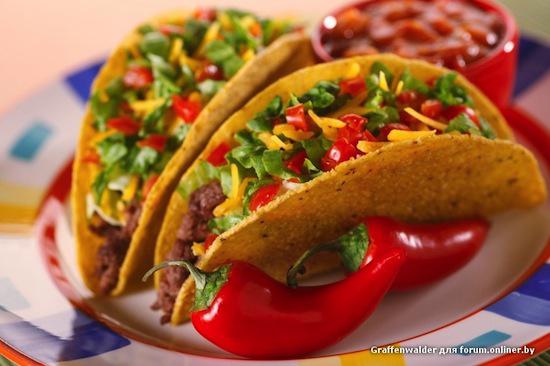
1. Buritosy and tacos - this is a national and a very popular meal here, based on corn tortillas, wheat flour and even cactus. The second component - the meat, chicken or vegetables and beans or beans necessarily, all seasoned with spicy chili sauce.
2. Fresh juices, as well as a variety of soft drinks, which are sold on every corner, very cheap, but beware - there generously put ice or diluted with water of unknown origin.
3. on the streets selling fruits in the already peeled and cut into a plastic bag before selling them to offer a sprinkle of chili powder and sugar, for fans of "hotter».
4. Homemade ice cream, which can be found on sale, sold without packaging, and what seems to chocolate chip, can be chili. Even buying ice cream to be specified - "spicy but pliz» =)
5. Tequila (the full name of Santiago de Tequila) - is the name of the Mexican city, which is the main production of the eponymous drink.
6. The blue agave - the plant from which tequila making, contrary to popular belief that it is made from cactus. Blue agave belongs to the family of asparagus and looks like a small shrub with thorns, apparently so the stereotype came about cactuses.
7. Tekilero - so-called expert on tequila.
8. Popular local sweets: a paste of apple and other fruit - in the form of toffee and cubes; candied coconut in Lima; sweet bean chili in the form chuchhely.
9. Boiled corn is also a popular delicacy - you can buy the entire cob or already purified in the cup. The seller, in addition to corn cup adds salt, mayonnaise and sprinkle with cheese and all this mess squeezing lime juice. And for the ear cup and the price is the same - a little more than a dollar.

10. Corn is generally universal product - its eaten raw, boiled and grilled, from her make cakes, soup, yogurt and even corn ice cream with pieces of corn.
11. The meat in the villages is often sold without a refrigerator - in spite of the heat, just hanging on the hook.
12. In large supermarkets sellers operate in gauze bandages.
13. Mexican Groupon is very developed in large cities - often there are interesting offers, promotions lovers discounts. We do not just buy coupons at a cafe, booked a room at the hotel (3 nights for the price of two), paid "extreme tour" with a discount of 75%, a visit to a crocodile farm for 50% and sightseeing Segway for 30% of the tour price.
14. The sand on the Caribbean coast of coral origin - very small, white and almost not heated. In 40-degree heat on it can be quite easy to walk barefoot
15. The water in the Caribbean is very warm, around 25-28 degrees year round.
16. Underwater Museum chetyrmmya with hundreds of sculptures, located at a depth of 2 to 10 meters is located near Cancun. He certainly will appeal to divers who are bored with tropical fish and coral reefs.
17. The beaches of Cancun and Tulum is among the ten best beaches in the world according to TripAdvisor.
18. Cenotes - are natural wells or small lakes that Maya Indians used as water sources and places for offerings, they are sure to appeal to fans of snorkeling. Most cenotes are located in caves with a lot of bizarre stalactites and stalagmites. The water is crystal clear and pleasantly cool, well-suited for a break from the heat outside.
19. Iguanas different colors and sizes are very common in the villages and small towns in Mexico.
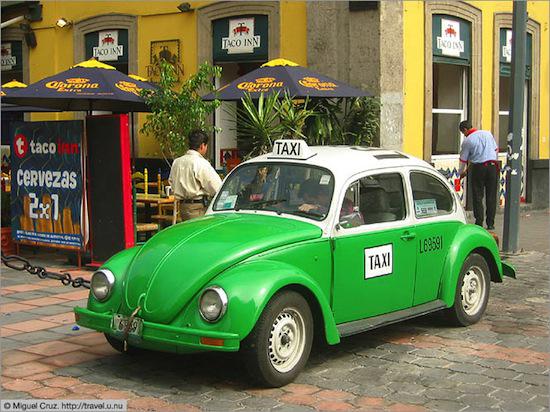
20. The official taxis in Mexico City on the glass hangs necessarily state license with a photo of the driver. To avoid misunderstandings, it is recommended to check the photo and the person sitting behind the wheel.
21. Taxis in Mexico varies by grade security. The security - the more expensive, but in general it is quite cheap. For 3 - 4 persons often more profitable to take a taxi than to ride on public transport.
22. The cost of a local call from a pay phone does not depend on the duration of the call. For example, unlimited landline call will cost 3 pesos (25 cents).
23. Mexico City is located in the mountains, at an altitude of 2240 meters, so if you are flying from the coast and lowland parts ready at the exit of the airport put on a sweater or jacket. During the day it is warm, and in the morning and in the evening is pretty cool.
24. Metro in the capital of the 20 million compared to St. Petersburg and Moscow, with respect to not crowded, even in rush hour.
25. symbol image, in addition to name, have each metro station - it is made specifically for those who can not read.
26. bicycle parking there at some subway stations - many run to the station by bike, hang it on a special handrails in the lobby before the turnstiles, and then go on the subway.
27. Many merchants can be found in the capital's subway - how to decompose the goods in transit, and moving the carriages. Funny voices howling, like the priest of the church, singing psalms, they offer buy a variety of goods - food, clothing, shoes, souvenirs and so on. D. - Often as we have "three to desyatochku» =).
28. Sellers of music CDs visible, or rather, heard most. They come in the car with the column-backpack and includes a CD with the hits so that you could hear in the neighboring station.
29. Free bicycle rental - special city program for tourists - operates in Mexico. Points bicycles are located close to many attractions.
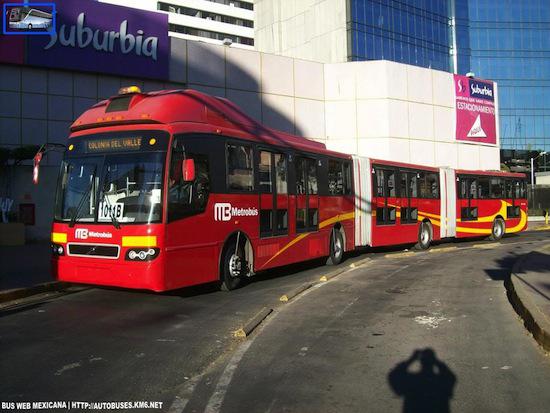
30. Metrobus - is a special form of transport in the capital, something in between subway and bus. Externally, it is a bus, but it consists of two parts and drives, more often, through a dedicated lane. Its entrance is through the turnstiles at specially equipped stations.
31. For the disabled and women is the first car in metrobase. This separation - a forced measure of the state to protect women from harassment hot Mexicans.
32. currency exchange in the tourist places very much, but it is best to change currency in banks - the course is always better. At itself necessarily have a passport.
33. The double name - the norm for local residents (eg, Addy Maria or Carlos Antonio). It has nothing to do with their parents, simply do not give birth one name but two.
34. Medical care for the population of Mexico is free, but is said by local, very poor quality, so if you want normal working conditions and assistance necessary to go to a private clinic.
35. Education is also almost entirely free. To give students a variety of social programs - up to free meals and shapes. The university paid decent scholarships, but many still do not want to learn - go to work.
36. quinceañera (Quinceañera) - one of the important events in the life of a Mexican girl, symbolizing the entry into adulthood. Quinceañera is celebrated on the day of the 15th anniversary, and is usually celebrated in a big way - with the ceremony in the church, flowers, gifts, professional photo and video shooting, dancing and live music. The guests and the hero of the occasion dressed in expensive clothes and jewelry to match wedding.
37. The numbering of streets and houses in the cities is very interesting - the streets are called by numbers: Calle 1, Calle 2. And even run perpendicular to the odd and the address is listed as «Calle 2, Building 56, between Calle 1 and Calle 3 ". It is very convenient and allows you to quickly find the street and the house on it without even having to hand the card.
38. One-way traffic is organized in many cities due to the fact that most of the streets are narrow. The direction of alternate motion - such as Calle 1 in one direction, and on Calle 3 - to another. Two-way traffic is on wide streets, they are usually called Avenida - avenues.
39. According to the same principle built most of the small towns and villages: the central area of the square on which the cathedral collection and police building, and in the middle - park.
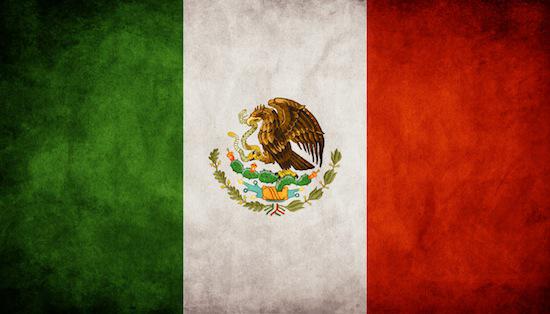
40. Tricycle - the most common form of transport in the small villages. And one wheel is located behind, and 2 - in front and are a big basket, which carry everything - from firewood to people.
41. The reed huts residents live very poor villages. Often in a hut only "piece of furniture" - a hammock.
42. chips, cookies, and Coca-Cola - the permanent set of products, which are in each shop, in any of the run-down village. Caption Coca-Cola is emblazoned on all stores.
43. insurance with a deductible offers the most car rental companies. To find insurance with full coverage you need to work hard.
44. The difference between "automatic" and "mechanics" when renting a car is usually not very significant - we overpaid only $ 12 a week.
45. License Plates are missing on many machines - instead of them hanging on the rear window of "those. Passport ».
46. imprinting - this ancient procedure had to be subjected to a bank card to pay for the rental car. A few days later the bank to block the card due to the fact that she had been "compromised". It is not known whether it is connected to the imprinting or simply spending in Mexico.
47. Heavy stuff, especially the pots, women often wear on their heads.
48. The police patrolling the streets of the city, standing in the back of an SUV - a frequent phenomenon in major tourist cities.
49. The corruption is very common among police officers - any breach on the road gently begin to offer "to solve the problem on the spot».
50. Mayan city of Chichen Itza, which refers to the list of "New 7 Wonders of the World" is located on the Yucatan Peninsula.
Alexei and Maria Glazunov, www.life-in-travels.ru
via factroom.ru
Interactive map of the Internet
The weight of the earth's atmosphere was 5, 14h10 in the degree of 18 kgf

